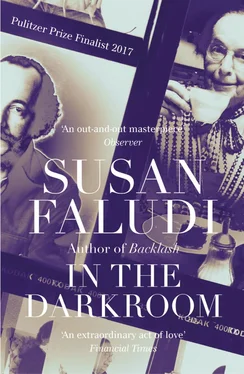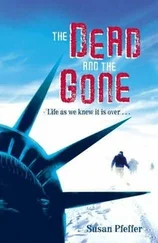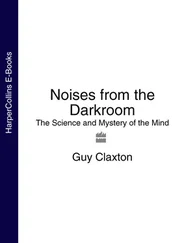The Hungarian Millennium is said to have begun when Árpád and six other Magyar chieftains rode over the mountains from somewhere in the East and conquered the great Carpathian Basin sometime in the ninth century, setting the stage for their heirs to establish a Christian monarchy, the Hungarian Kingdom, sometime around the year 1000. What actually happened is hard to say. The story of the “Magyar Conquest” is derived from the Gesta Hungarorum , an account written three hundred years later by a royal notary identified as P. dictus magister (“P. who is called master”), who drew on folk ballads, medieval romances, and the Bible to create a cast of Magyar heroes and the enemies that they allegedly vanquished. The Árpád dynasty, in any event, was extinct by 1301. Kings drafted from foreign dynasties (but generally claiming a drop of Árpád blood) occupied the throne for the next two centuries. And for even more centuries the country was ravaged by invasions, defeats, and occupations from foreign forces—Mongols, Turks, Russians, Habsburg Austrians, Germans, and Russians again. With few exceptions, Hungary’s liberators, like so many of the country’s most celebrated figures, were “foreign,” too. As Paul Lendvai observed in The Hungarians: A Thousand Years of Victory in Defeat :
One of the most astounding traits of Hungarian history, subsequently suppressed or flatly denied by nationalistic chroniclers, is that the makers of the national myths, the widely acclaimed heroes of the Ottoman wars, the political and military leaders of the War of Independence against the Habsburgs, the outstanding figures of literature and science, were totally or partly of German, Croat, Slovak, Romanian or Serb origin.
In other words, not Magyar.
Hungary achieved its cultural zenith in Europe’s Belle Époque—under the rule of the Austrian Habsburgs. In 1867, Habsburg emperor Franz Josef loosened the reins by creating the Austrian-Hungarian Monarchy—usually called the Dual Monarchy—a compromise that granted Hungary a large measure of self-determination and ushered in a cultural and economic revival. The country’s long sense of itself as an autonomous kingdom seemed validated, though the Dual Monarchy’s sole monarch was still Franz Josef. The fall of the Austro-Hungarian Empire at the end of World War I finally brought full independence, albeit with destruction hot on its heels.
The Treaty of Trianon, the 1920 peace agreement reached at the Grand Trianon Palace in Versailles, forced Hungary to relinquish a whopping three-fifths of its population and two-thirds of its landmass to the successor states of Romania, Czechoslovakia, Yugoslavia, and Austria. If the nation was thus constricted, its self-image as sacrificial lamb was confirmed. “We are the most forsaken of all peoples on this earth,” Hungary’s national poet Sándor Petőfi had written in the mid-nineteenth century. After Trianon, Hungary became all the more a martyr among nations, a people identified by its stigmata. “The realm held together by the Holy Crown has been dismembered, and the lopped off limbs of the Holy Crown’s body are faint with the loss of blood,” jurist Kálmán Molnár pronounced at the time, in language as typical as it was overheated. “In a swoon, they await death or resurrection.” To Hungary’s more recent irredentists, Trianon remains the unholy desecration, a devastating wound, an appalling act of national identity theft undimmed by the passage of more than eighty years.
My father and I headed for the Hungarian National Gallery, which was offering a retrospective of Mihály Munkácsy. The celebrated Hungarian painter had been born and buried in Hungary, but little else. Born Michael von Lieb to German parents, he was trained in Munich and Düsseldorf, spent most of his career in Paris, and died in a sanitarium in Germany. Nonetheless, he was one of Hungary’s most venerated artists—venerated especially for having been celebrated as a “great Hungarian” in the world beyond Hungary. After Munkácsy’s death in 1900, the authorities gave him a state funeral in the city’s sacred Heroes’ Square, his body displayed, beside the plaza’s galloping statuary of the seven Magyar chieftains, on a forty-five-foot-high catafalque surrounded by flaming bronze torches.
The museum’s ticket taker, another crabby granny, scowled at my father as she handed us our passes. I couldn’t tell if the disapproval registered; my father gave no sign. In the exhibition hall, I gravitated to Munkácsy’s earliest efforts, bleakly realistic renderings of impoverished peasant life. (The desperate conditions of the rural Magyar populace, deep in semifeudal penury well into the twentieth century, earned Hungary the moniker “The Country of Three Million Beggars.”) My father frowned; this period didn’t put Hungary in a “positive” light. “You’re making too much of that,” she said, pulling my sleeve as I lingered before paintings of careworn women gathering firewood and tending to hungry children. My father was eager to move on to Munkácsy’s later and more famous creations: the salon portraits of fashionable Austro-Hungarian aristocracy and the epic extravaganzas of biblical dramas and victorious scenes from the Magyar Conquest. “This is authentic Munkácsy,” my father said, directing me to the walls that displayed the artist’s final blast of bombastry.
When we’d exhausted the Technicolor lollapaloozas, she led the way to the permanent collection, a labyrinth of galleries dominated by lugubrious melodramas of Magyar affliction displayed in heavy gilt-edged frames. I sped through the next dozen halls showcasing scenes from Hungary’s genesis—from the heralded arrival of Prince Árpád to the nineteenth-century revolution led by Lajos Kossuth, “The Father of Hungarian Democracy”—and sank onto a bench in a corridor to wait for my father. The room was hushed and dark; light filtered weakly through a set of high grated windows. I thought of catacombs, and that endless trip we took as a family to Hungary in 1970, when my father was so insistent that we tour the nation’s cathedrals and monasteries. Endless, that is, from the perspective of an eleven-year-old who experienced the sepulchral quarters, the cloying smell of candle wax, and the echo of heels clattering on yet another cold marble ambulatory as her own private purgatory. Why, I wondered, did we never visit a synagogue?
There was no sign of my father. A stout matron in a guard uniform inspected me darkly from her wooden chair in the corner. Maybe it was me. Maybe these battle-axes weren’t staring at my father in a dress, after all. Maybe they disapproved of a girl wearing jeans. Or maybe they just didn’t like foreign women. After a while, I got tired of the evil eye and retraced my steps. I found my father many rooms back, transfixed before Gyula Benczúr’s The Baptism of Vajk , an operatic depiction of the tenth-century christening of Hungary’s first king. The Magyar tribesman Vajk kneels bare-shouldered before the holy font and gilded chalice, about to shed his pagan name and receive his new Christian one: István, Stephen. My father’s namesake.
I studied the baptism of the former Vajk over the former István’s shoulder.
“Isn’t it a bit”—I searched for the proper word—“histrionic?”
“It’s a work of true greatness,” she said with a flourish of matching grandiosity, her polka-dot skirt billowing with her enthusiasm. “It’s characteristically Hungarian.”
In an eggheaded attempt to prepare for my visit, I’d read István Bibó’s scathing inspection of “Hungarianism,” in an essay published at the end of World War II. The political scientist saw his country’s identity as Potemkin, a society “deceiving itself” and held together by little more than “wishful” thinking and “frills and veneers.” “Today’s Hungarians are among Europe’s least well-defined groups,” Bibó wrote—and Hungarianism a “grand illusion.” As I recalled Bibó now, the afternoon’s displays threatened to turn hallucinogenic. Everything we were looking at seemed oddly, fatally confectionary, the face of a nation montaged onto one fantasia after another: The anointed Saint Stephen was the “patriarch” whose patrimony had no heirs; Prince Eugene was the (French-born) Austrian Imperial Army general who freed Hungary from the Ottoman Empire only to hand it over to the Habsburgs; Lajos Kossuth was the Father of Hungarian Democracy whose 1848 bid for Hungarian independence (celebrated every March 15 on National Day) was stillborn; the Turul was mythical herald to a thousand-year Magyar reign that never hatched.
Читать дальше












